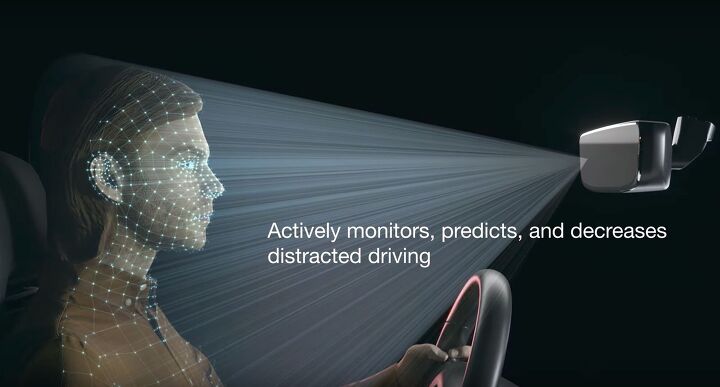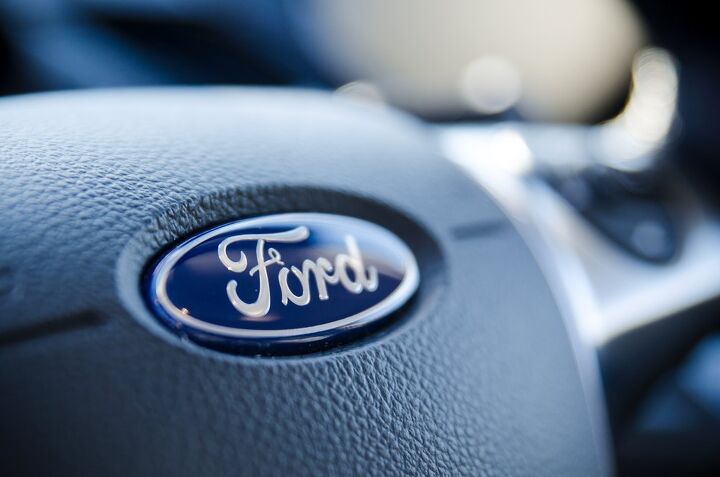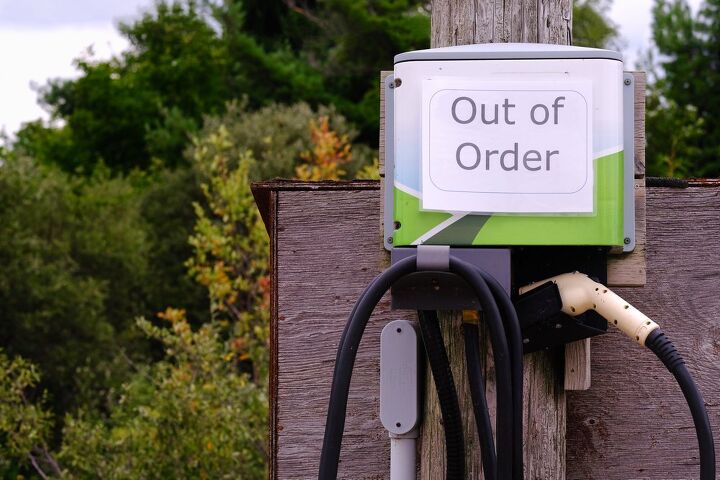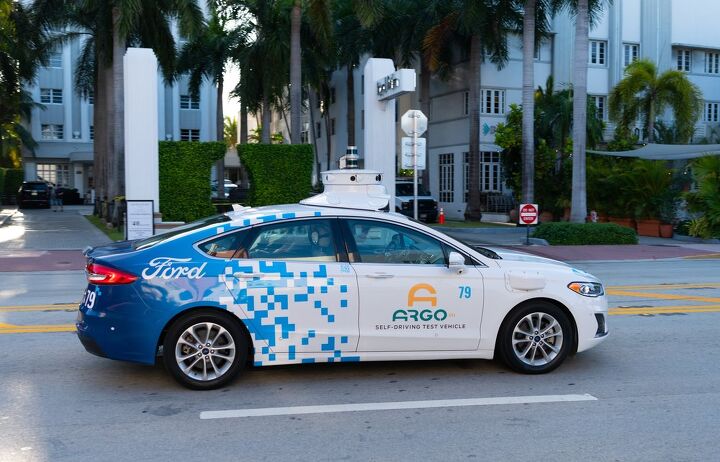#technology
Android Auto Adds Zoom to UX, Society’s End is Near
In what is surely the final blow to any semblance of work/life balance, Google has added WebEx and Zoom meeting functionality to its Android Auto suite of services.
San Francisco Traffic Stands Still After Cruise AVs Stall in North Beach
With California having approved the contentious expansion of driverless robotaxis operating in San Francisco, autonomous test vehicles showed their readiness by stalling themselves in the middle of town. The situation reportedly wasn’t the result of local activists trying to disable the vehicles or cyber warfare, but rather the result of their having lost their internet connection for a few minutes.
Driving Dystopia: Companies Are Getting Serious About Vehicle-to-Infrastructure Connectivity
Before connected vehicles had become ubiquitous, numerous companies suggested that they would be networked into roadway infrastructure to improve safety and decrease traffic congestion. The concept even became a keystone issue for lobbyists trying to convince lawmakers to create regulations favorable to autonomous cars.
But it never manifested due to just how ambitious the overarching concept happened to be. The relevant technologies were still in their infancy and would require years of collaboration between multiple industries and various government agencies before anything got off the ground. However, things are reportedly starting to change. Pilot programs are being implemented on public streets, companies are working on the necessary hardware, and the U.S. government is asking for more with cash in hand.
China’s GAC Debuts Ammonia-Powered Car Engine
With the automotive industry now keen on propulsion systems that don’t emit a lot of carbon, we’ve seen decades of manufacturers toying with alternative fuels. Corn-based ethanol was big for a while and the Germans have recently shown a renewed interest in carbon monoxide and hydrogen-based synthetic fuel stemming from the gasification of coal, biomass, and/or methane.
Meanwhile, China’s state-owned Guangzhou Automobile Group Company (GAC) has announced it had developed an engine powered by ammonia with help from Toyota Motor Corporation during its annual technology showcase.
Ruff News for Waymo After Test Vehicle Runs Over Dog
A Waymo autonomous test vehicle struck and killed a small dog in San Francisco last month, with news emerging after an incident report filed with the California Department of Motor Vehicles became public. While the accident is nothing in comparison to the fatal crash from 2018, where an Uber AV killed a cyclist, it still spells bad publicity for companies hoping to field self-driving vehicles with the public’s blessing.
Magna’s Driver-Monitoring Rearview Mirror Ready for Action
With European regulators having decided that all new vehicles must have driver monitoring systems starting in 2024, the industry is gearing up to supply new products. However, consumers may not like the idea of driver-facing cameras recording their every move from inside the cabin, as there’s a strong possibility that data-obsessed automakers will utilize that information in unpalatable ways. That’s why Magna’s latest gizmo hides the camera lens behind the glass of your rear-view mirror.
Waymo Briefly Sidelines Test Vehicles Due to Fog
Waymo, Alphabet’s self-driving unit, reportedly had some of its San Francisco-based test vehicles stymied by dense fog earlier in the week. Compared to some of the other incidents we’ve seen attached to autonomous test cars of late, the fog delay seems to be the most minor of mishaps. However, it’s another reminder that a lot of the systems AVs use to "see" have yet to overcome inclement weather.
Revenge of the Nerds: OEMs Pay Hackers Less Than Most Other Industries
Most readers will remember Dennis Nedry from the first Jurassic Park movie, a computer subcontractor who brought down the entire park for numerous reasons – most of which had to do with money. In other words, John Hammond seemed to have “spared no expense” except for Nedry's services, and therefore Nedry ruined the entire project.
A new report suggests that some car companies may be acting in a similar manner – at least when it comes to the amount of cash they’re paying computer experts to find bugs in their code.
Place Your Bets: Mercedes Suggests Level 4 Automated Driving By 2030
Remember a few years ago when just about every automaker was promising that self-driving would become publicly available by 2020? Well, they’re hoping you didn’t because a few of them are starting to issue new claims that vehicular autonomy is once again less than a decade away.
While “hands-free” driving systems that require you to remain constantly vigilant (in case you need to take over) have become the new hotness, Mercedes-Benz said it’s planning on selling a version that will qualify as truly self-driving by 2030. But there are caveats to that claim pertaining to specific traffic conditions – meaning it’s still not actually going to be SAE Level 5.
Driving Dystopia: Ford Patent Would Have Vehicles Repossess Themselves
The number of U.S. vehicle owners who are more than 59 days behind in their auto loan payments was 26.7 percent higher at the end of 2022 than they were at the end of 2021. This is due to a myriad of factors. Car payments have gotten larger, loan terms have increased, inflation has devalued the currency, and subprime borrowers are finding themselves on the wrong end of a widening wealth gap.
While automotive repossessions declined during the pandemic, mainly due to lenders offering amnesty periods, they’ve likewise spiked through the end of 2022. This trend is assumed to continue, setting up a lot of business for repo men. However, Ford Motor Co. has patented a system that would effectively make vehicles unresponsive to drivers that have missed a few payments. Meanwhile, automobiles boasting the latest advanced driving technologies could allegedly repossess themselves.
J.D. Power Survey Suggests Public EV Charging Getting Worse
Over the last couple of years, there have been a series of questionnaires hoping to determine how satisfied people are with the United States EV charging infrastructure. Most have been pretty bleak, suggesting that just about everyone driving an electric car prefers to charge at home. But these surveys have also highlighted a problem with the general unreliability of public charging stations.
Based on the latest data coming from J.D. Power, the issue appears to have worsened. The outlet’s Electric Vehicle Experience Public Charging Study alleges that over 20 percent of all charging attempts failed in 2022.
Consumer Reports Offers Ideas to Make Driving Tech Safer and More Enjoyable
Driver assistance features have started to lose their luster now that they’re starting to become mainstream. Studies have shown that they’re often less reliable than one would expect and are being implemented in a manner that may not be appealing to motorists. In an effort to tackle this problem, Consumer Reports has released detailed guidelines to car manufacturers it believes will make people more willing to engage with advanced driver assist systems (ADAS).
U.S. Transportation Secretary Realizes Autonomous Cars Aren’t Ready
Despite the automotive industry having had the concept on its mind since the 1950s, autonomous vehicles still have yet to manifest in a manner that would allow them to be safely fielded in large numbers. With manufacturers previously vowing to have self-driving cars available to customers by 2020, consumers are starting to write the technology off as an industrial chimera. It’s also starting to look like the government is having doubts, especially now that U.S. Transportation Secretary Pete Buttigieg seems to be calling the technology to task.
IIHS Reports Pedestrian Detection Tech Rarely Works After Dark
The Insurance Institute for Highway Safety (IIHS) released a study on Tuesday that showcased just how badly advanced driving aids perform at night – specifically the automatic emergency braking systems that are linked to pedestrian detection.
This mimics earlier studies connected by the American Automobile Association (AAA), which frequently highlighted inconsistencies in driver assistance features in general. But nighttime was when things really started to come undone, with plenty of models failing to register that the simulated pedestrians used for testing were even there.
U.S. Drivers Seriously Starting to Sour on Autonomous Vehicles
Despite some of the world’s largest automakers promising commercially viable self-driving cars by 2020, autonomous vehicles have yet to manifest in any serious capacity. Granted, advanced driving aids have begun to usurp some amount of control from the driver. But they aren’t quite what was envisioned by the industry when everyone was a lot more optimistic about the technologies involved. This may also be true of consumers, who seem to have soured on the general premise of autonomous vehicles as they’ve started to learn all that might entail.






























Recent Comments